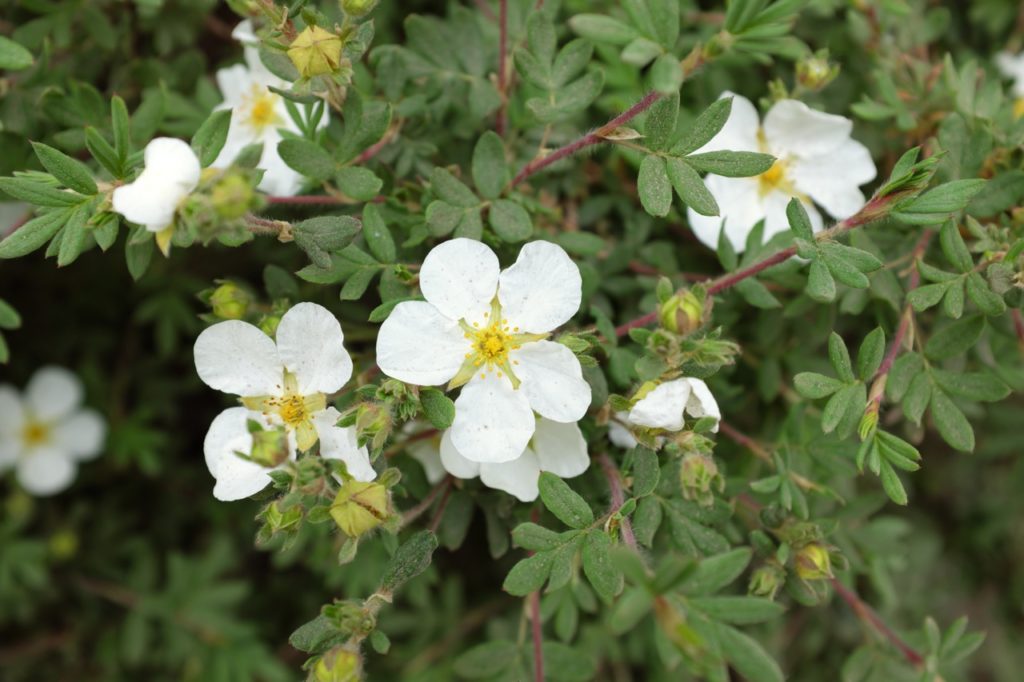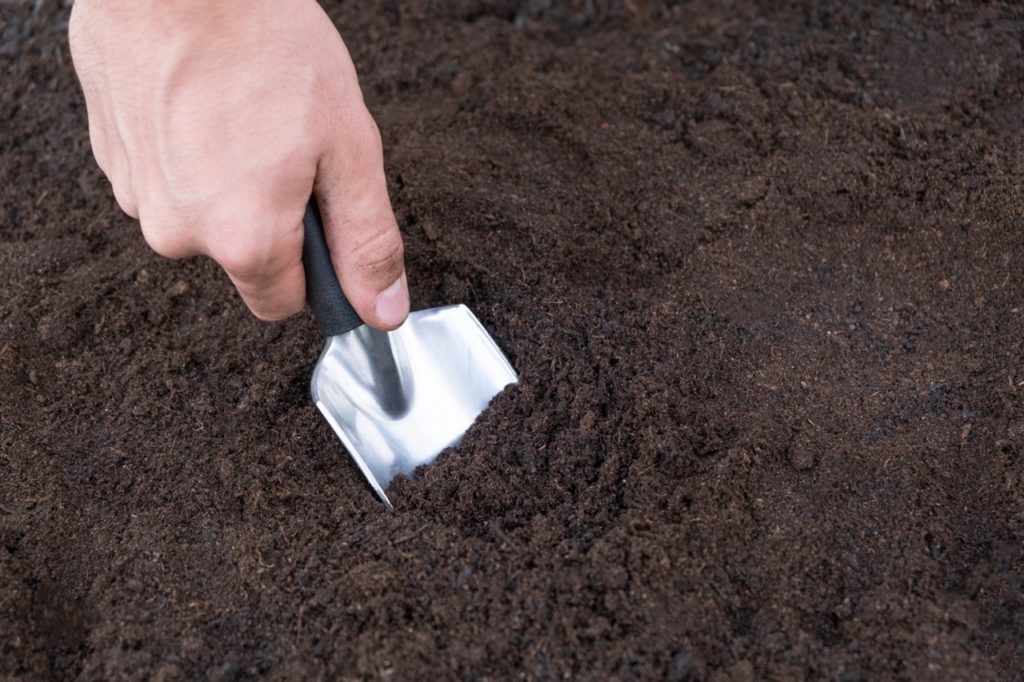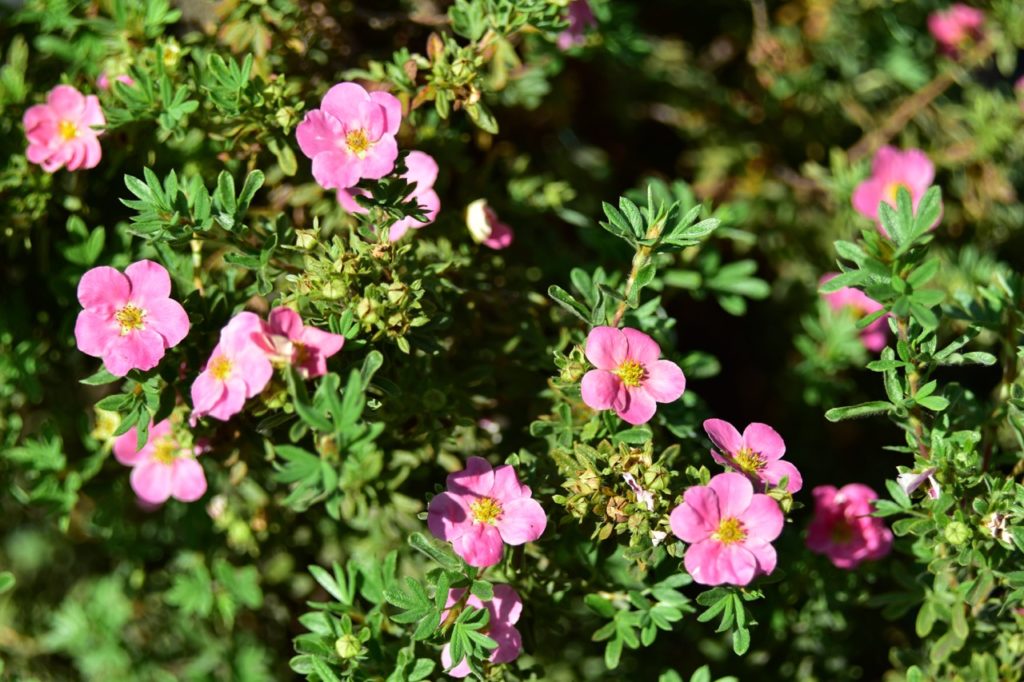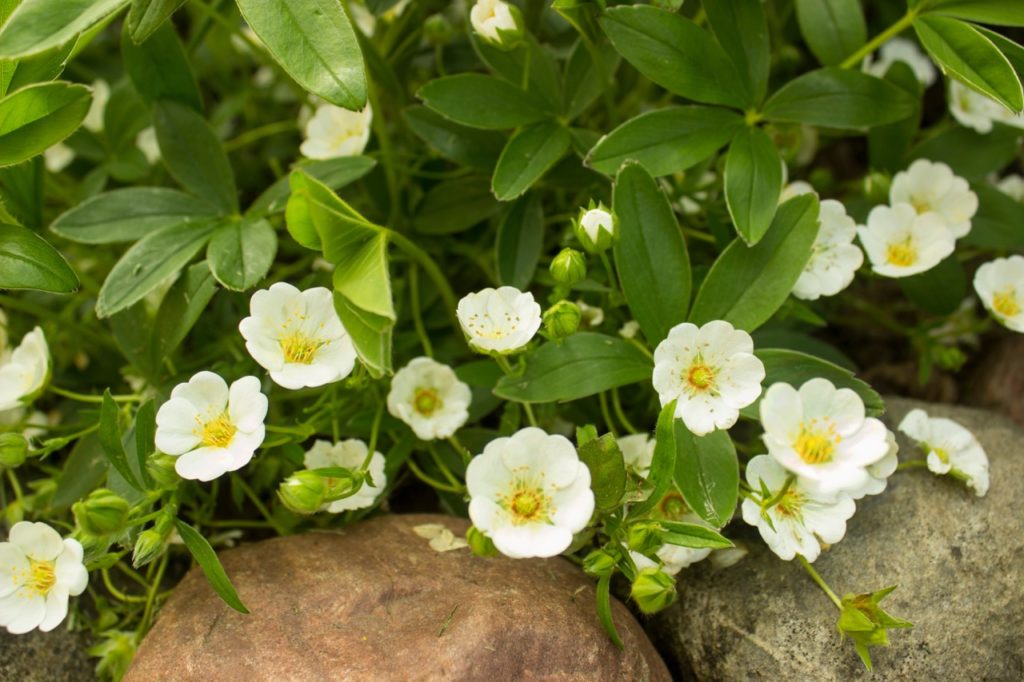Potted Potentilla Can Be Planted Out Immediately By Following These 5 Steps

SHRUBS > POTENTILLA > PLANTING

Elizabeth is a Permaculture Garden Designer, Sustainability Consultant and Professional Writer, working as an advocate for positive change. She graduated from the University of St. Andrews with an MA in English and Philosophy and obtained a Diploma in Applied Permaculture Design from the Permaculture Association.
Reviewed By COLIN SKELLY

Colin is a Horticulturist and Horticultural Consultant with experience in a range of practical and managerial roles across heritage, commercial and public horticulture. He holds the Royal Horticultural Society’s Master of Horticulture award and has a particular interest in horticultural ecology and naturalistic planting for habitat and climate resilience.
IN THIS GUIDE
POTENTILLA GUIDES
Planting
Pruning
Potentillas can either be shrubs or herbaceous perennial plants.
Within both of these categories, several species and cultivars can be very attractive garden plants, useful in a range of settings.
There are plenty of great choices that vary quite a bit in size, form, flower and foliage colour.
If you are considering growing potentilla in your garden, you will need, first of all, to decide which variety or varieties to grow.
Once you have decided this, you will need to understand where, when and how to plant the potentilla you have chosen.
When planting potentilla, here is the process to follow:
- Choose which potential cultivar you wish to plant.
- Decide where in your garden to grow your potentilla.
- Prepare your chosen growing area and dig a planting hole.
- Plant out your potential, firming around the planting hole with soil.
- Water in well and mulch around the plants.
Read on for a thorough breakdown of each of these steps in more detail.
1) Choose A Shrubby Or Perennial Cultivar
Before you plant a potentilla, you will, of course, have to select a variety.
Not only will you have to decide if a shrubby or perennial potentilla is what you are looking for, but you will also have to narrow down your choice further to a specific cultivar.

Shrubby types are typically purchased as potted plants from a garden centre or plant nursery, and perennial plants can be purchased as potted plants, or also as bare-root specimens, plug plants or younger plants in smaller pots.
A pot-grown plant can be planted immediately in your garden or in a new container.
Smaller and less established plants will typically be planted into a pot to grow on to plant out later, once more established.
2) Find A Suitable Location
Potentillas typically grow well in full sun, though some prefer some light or partial shade.
Most prefer moist but well-drained soil and no varieties thrive in waterlogged conditions, as poor drainage can be one of the biggest threats to these plants.

Shrubby types work well at the front of borders, as low hedgerows or as ground cover in open areas.
Perennial potentillas are fantastic for cottage-garden style borders or in rock gardens.
Both types can also work well as container plants.
3) Prepare The Growing Area
When preparing an area to plant potentilla, ensuring good drainage should be your key concern.
Potentilla actually often thrives in poor soils, so amending the soil overly won’t necessarily do much good.

However, amending soil to improve drainage and mulching over the surface to retain moisture can sometimes be beneficial.
“Digging or forking over the soil and incorporating compost can be sufficient to improve drainage but this will only work where water does not stand in wet weather,” says Master Horticulturist Colin Skelly.
“With soils like clay that drain more slowly, I add a couple of handfuls of grit into the planting hole to sharpen the drainage around the roots on planting.”
If growing in a container, selecting a suitable pot for the variety you are growing and filling this with a suitable peat-free and free-draining growing medium is crucial for success.
4) Plant Out Your Potentilla
The actual planting process is very simple – just make a hole and place your plant within it.
Make sure that the plant is buried to the same depth that it was in its previous location or previous pot.

Place the plant in the chosen location and firm the soil or growing medium gently around the plant.
Pat down the soil firmly enough to keep the plant secure, but not too tightly that you stifle it.
When planting potentilla, it is also useful to think about which other plants which might like similar conditions you might grow alongside it.

Good companions will depend on the location and which potentilla varieties you have chosen to grow.
5) Water In And Mulch
After planting your potentilla, water it in, but ensure that excess water can drain away freely.
Then, add a mulch of organic matter around the plants, especially those that do better in moist but free-draining conditions, as the mulch will help retain moisture in the soil or growing medium.

The mulch layer will also help to reduce weeds and keep competition down.
In a rock garden, potentillas which like particularly free-draining conditions might also be top-dressed with a layer of gravel to make sure that surface water is able to drain away.
As long as you choose the right type and variety, and place it in the right location, it is difficult to go wrong when planting potentilla.
